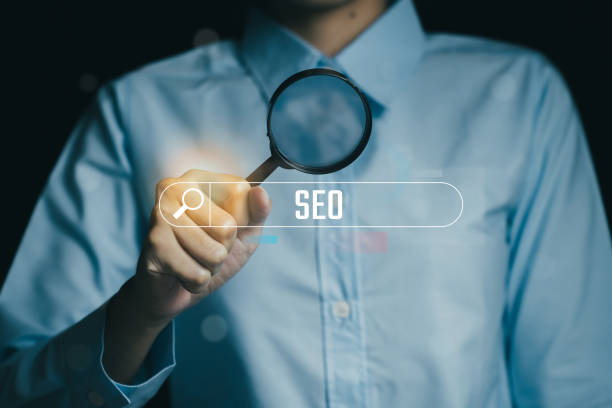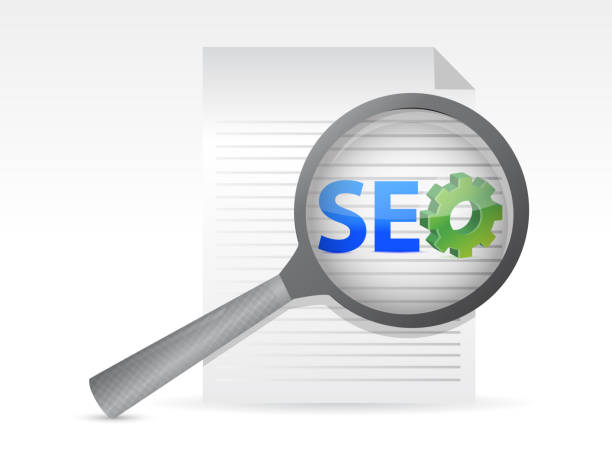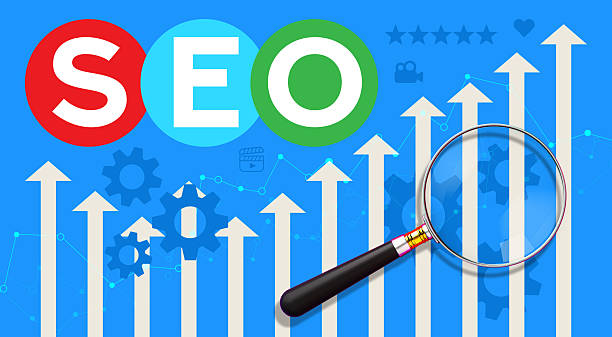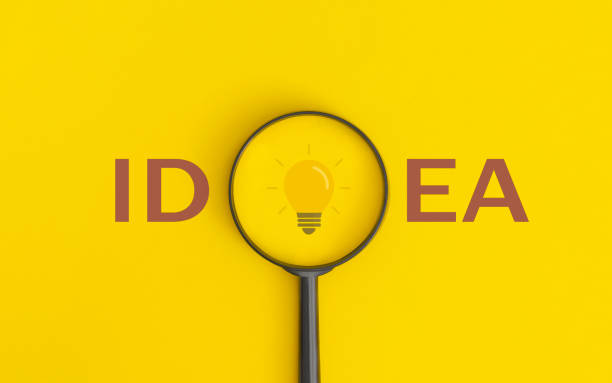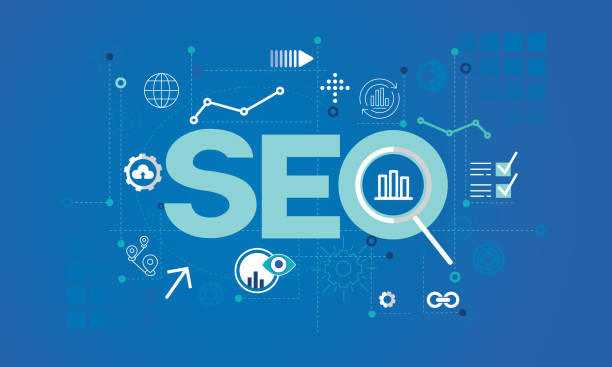Introduction to Technical SEO and Its Importance
Introduction to Technical SEO and Its Importance
#Technical SEO is the most fundamental part of an SEO strategy and focuses on optimizing the technical aspects of a website so that search engines can easily crawl and index the site.
Without strong technical SEO, other efforts in content optimization and link building will not yield the desired results.
SEO helps your site achieve higher rankings.
The importance of technical SEO stems from the fact that search engines such as Google, Yahoo, and Bing consider numerous technical factors when ranking sites.
These factors include page load speed, site accessibility, URL structure, use of structured data, and mobile compatibility.
A website that is technically optimized has a better chance of earning higher rankings in search results.
Improving technical SEO is a fundamental necessity.
In this article, we will delve deeper into the various aspects of technical SEO and provide practical solutions to improve your website’s technical status.
Join us to improve the technical SEO of your site.
Tired of your company’s website not getting the visibility it deserves, and losing potential customers? Solve this problem forever with professional and effective website design by Rasaweb!
✅ Increase brand credibility and build customer trust
✅ Attract targeted sales leads
⚡ Contact us now for a free consultation!
Examining and Improving Website Loading Speed
Examining and Improving Website Loading Speed
Website loading speed is one of the most important technical SEO factors.
Users who wait for a page to load for a long time usually leave the site, which leads to an increase in the bounce rate and a decrease in the site’s ranking in search results.
Google has also explicitly stated that page load speed is an important ranking factor.
To check website loading speed, there are numerous tools available, including Google PageSpeed Insights, GTmetrix, and WebPageTest.
In addition to providing information on loading speed, these tools also offer helpful suggestions for improvement.
Click here to preview your posts with PRO themes ››
Some key strategies for improving website loading speed include:
- Image optimization: Using appropriate formats (such as WebP), compressing images, and specifying appropriate image dimensions.
- Enabling browser caching: Storing static resources (such as images, CSS, and JavaScript files) in the user’s browser.
- Minifying CSS and JavaScript files: Removing whitespace and comments from code files.
- Using a CDN (Content Delivery Network): Distributing website content across multiple servers worldwide to reduce loading time.
- Code optimization: Modifying and improving code to reduce size and increase processing speed.
By implementing these strategies, you can significantly improve your website’s loading speed and provide a better user experience for visitors.
Optimizing URL Structure and Site Architecture
Optimizing URL Structure and Site Architecture
URL structure and site architecture play an important role in technical SEO.
A suitable URL structure helps search engines easily understand and index site content.
Also, a logical and organized site architecture helps users easily navigate the site and find the information they need.
This good user experience greatly helps your site’s SEO.
To optimize the URL structure, consider the following points:
- Use short and descriptive URLs: URLs should be short and include keywords related to the page’s content.
- Use hyphens (-) instead of underscores (_): Search engines consider hyphens as word separators.
- Avoid using too many parameters: Parameters can make URLs complex and incomprehensible.
- Use a hierarchical structure: URLs should reflect the hierarchical structure of the site.
To optimize the site architecture, consider the following points:
- Create logical and organized categories: Site content should be placed in related and logical categories.
- Use a clear and easy navigation menu: The navigation menu should help users easily navigate the site.
- Create a Sitemap: A sitemap is a list of all pages on the site, which helps search engines easily crawl and index the site.
- Use internal links: Internal links direct users and search engines to other pages on the site and help improve the site’s ranking.
Click here to preview your posts with PRO themes ››
By implementing these strategies, you can improve your URL structure and site architecture and upgrade your site’s SEO.
| Element | Description | Importance for SEO |
|---|---|---|
| URL | Web page address | High |
| Navigation Menu | Site menu structure | Medium |
| Sitemap | List of site pages | High |
Mobile Optimization (Mobile-First Indexing)
Mobile Optimization (Mobile-First Indexing)
Given the increasing use of mobile phones for internet searches, optimizing your website for mobile is particularly important.
Google has also chosen Mobile-First Indexing as the primary method for indexing websites since 2019.
This means that Google considers the mobile version of your website as the primary version and uses it to rank the site.
To optimize your website for mobile, consider the following points:
- Use responsive design: Responsive design allows the website to automatically adapt to the screen size of different devices (such as mobile phones, tablets, and personal computers).
- Optimize loading speed on mobile: Loading speed on mobile is even more important than loading speed on personal computers.
- Use readable and mobile-friendly fonts: Fonts should be large and readable enough so that users can easily read the text on a small mobile screen.
- Use large, touchable buttons and links: Buttons and links should be large enough so that users can easily touch them with their fingers.
- Avoid using intrusive pop-ups: Pop-ups on mobile are very annoying and can severely degrade the user experience.
By implementing these strategies, you can optimize your website for mobile and improve your site’s ranking in search results.
This is important in your site’s SEO.
Do visitors leave your online store site before making a purchase? Don’t worry anymore! With Rasaweb’s professional online store website design services, solve the problem of not converting visitors into customers forever!
✅ Significantly increase conversion rates and sales
✅ Exceptional and attractive user experience
⚡ Contact us now for a free consultation!
Using Structured Data
Using Structured Data
Structured data is code that helps search engines better understand the content of your website.
Using structured data, you can provide information about products, articles, events, and other types of content to search engines in a clear and organized manner.
This helps search engines display more accurate and relevant search results.
This technique helps improve SEO.
Structured data can be implemented in various ways, but the most common form is using Schema.org.
Schema.org is a standard set of vocabulary supported by major search engines (such as Google, Yahoo, and Bing).
To use structured data, first determine the type of content you have, and then add the corresponding Schema.org code to your page.
You can use Google’s Structured Data Markup Helper tool to generate Schema.org code.
Using structured data, you can increase your website’s chances of appearing in rich search results (Rich Results).
Rich search results are results that display additional information such as images, ratings, and prices in addition to the title and description.
These types of results attract more attention and can increase your site’s click-through rate (CTR).
SEO improves with this method.
Checking and Fixing 404 Errors and Broken Links
Checking and Fixing 404 Errors and Broken Links
404 errors and broken links are links that point to pages on your website that no longer exist.
These errors can degrade the user experience and harm your site’s SEO.
Search engines prefer websites that have a lot of 404 errors and broken links less. Don’t ruin your site’s SEO.
To check for 404 errors and broken links, you can use various tools such as Google Search Console, Screaming Frog, and Ahrefs.
These tools provide you with a list of all broken links on your website.
After identifying broken links, you must fix them.
To fix broken links, you can choose one of the following methods:
- Fix the link: If the link has been moved to a new page, fix the link to point to the new page.
- Delete the link: If the page no longer exists and there is no replacement for it, delete the link.
- Create a Redirect: If the page has been moved to another page, create a 301 redirect from the old page to the new page.
By fixing 404 errors and broken links, you can improve your website’s user experience and upgrade your site’s SEO.
Creating and Optimizing a Sitemap
Creating and Optimizing a Sitemap
A sitemap is a file that provides search engines with a list of all the pages on your website.
A sitemap helps search engines easily find and index all the pages on your site.
A complete and optimized sitemap greatly helps your site’s SEO.
SEO without a sitemap is very difficult.
Sitemaps are usually created in XML format.
You can use various tools to create a sitemap, such as XML-Sitemaps.com.
After creating the sitemap, you must register it with Google Search Console.
This tells Google that your sitemap exists and can use it to crawl your site.
To optimize the sitemap, consider the following points:
- Make sure your sitemap includes all the important pages on your site.
- Update your sitemap regularly.
- Use canonical URLs in your sitemap.
- Only include indexable pages in your sitemap.
| Feature | Description | Recommended Value |
|---|---|---|
<url> |
Includes information about a page | All important pages |
<loc> |
Page address | Full page address |
<lastmod> |
Last page change date | Last edit date |
<changefreq> |
How often a page changes | Every day/week |
By creating and optimizing a sitemap, you can help search engines easily crawl and index your site and improve your site’s ranking in search results.
Don’t underestimate SEO.
Managing Robots.txt File
Managing Robots.txt File
The Robots.txt file tells search engines which pages and sections of your website should not be crawled and indexed.
Using the Robots.txt file, you can prevent unnecessary and duplicate pages from being crawled and indexed and help search engines use their resources more efficiently.
Proper management of this file helps SEO.
The Robots.txt file must be located in the root of your website (for example, example.com/robots.txt).
This file contains instructions that tell search engines which pages they are allowed to crawl and which pages they should not crawl.
Some common instructions in the Robots.txt file include:
- User-agent: Specifies which search engine this instruction applies to.
- Disallow: Specifies which pages should not be crawled.
- Allow: Specifies which pages should be crawled (even if they are in the Disallow directive).
Note that the Robots.txt file is a directive and search engines are not required to follow it.
However, most reputable search engines respect this file.
Doesn’t your current online store design generate the expected sales for you?
Rasaweb specializes in professional online store website design!
✅ An attractive and user-friendly site aimed at increasing sales
✅ High speed and security for an ideal shopping experience⚡ Get a free online store design consultation with Rasaweb!
Internal and External Link Building Strategies
Internal and External Link Building Strategies
Link building is one of the most important factors in SEO.
Internal link building refers to links from one page on your website to another page on the same website.
External link building refers to links from other websites to your website.
Both models of link building are important in SEO.
Internal link building helps search engines better understand the structure of your website and identify more important pages.
Also, internal link building helps users easily navigate your site and find the information they need.
A good internal link building strategy helps improve the technical SEO of the site.
External link building shows search engines that your website is credible and trustworthy.
The more external links pointing to your website, the better your site’s ranking in search results.
To create a successful link building strategy, consider the following points:
- Create high-quality and valuable content: High-quality content naturally attracts more links.
- Link to related pages: Links should point to pages that are related to the content of the main page.
- Use appropriate Anchor Text: Anchor text is the text that points to the link.
The anchor text should be descriptive and relevant to the content of the destination page. - Link to reputable websites: Linking to reputable websites helps improve the credibility of your website.
Technical SEO Analysis and Monitoring
Technical SEO Analysis and Monitoring
Technical SEO analysis and monitoring is a process that helps you assess the technical SEO status of your website and identify its problems and weaknesses.
Using this information, you can take the necessary steps to improve the technical SEO of your website and improve your site’s ranking in search results.
This process is vital for continuous SEO improvement.
To analyze and monitor technical SEO, you can use various tools such as Google Search Console, Google Analytics, Ahrefs, and SEMrush.
These tools provide useful information about page loading speed, site accessibility, URL structure, use of structured data, mobile compatibility, and other aspects of technical SEO.
Regularly check the technical SEO status of your website and identify its problems and weaknesses.
Then, take the necessary steps to fix these problems and improve the technical SEO of your website.
With continuous monitoring, you can prevent new problems from occurring and continuously improve the SEO performance of your website.
SEO requires continuous analysis.
By doing this process, you can ensure the optimal performance of your website in search engines and improve your site’s ranking in search results.
Remember that SEO is an ongoing process and requires continuous effort and follow-up.
Frequently Asked Questions
| Question | Answer |
|---|---|
| What is SEO? | SEO, or Search Engine Optimization, is the process of increasing the quality and quantity of website traffic by improving the site’s ranking in the natural (organic) results of search engines like Google. |
| What are the main types of SEO? | SEO is divided into three main categories: On-Page SEO, Off-Page SEO, and Technical SEO. |
| What does On-Page SEO include? | On-Page SEO includes optimizing elements within the website, such as keywords, title tag, meta description, content, URL structure, images, and internal links. |
| What is Off-Page SEO? | Off-Page SEO refers to activities outside the website that help improve its ranking, such as backlink building, social media marketing, and brand mentions. |
| What is Technical SEO? | Technical SEO focuses on optimizing the technical aspects of the website to help search engines crawl and index it better. This includes site speed, mobile-friendliness, site structure, sitemaps, and the Robots.txt file. |
| What role do keywords play in SEO? | Keywords are phrases that users enter into search engines. The correct and targeted use of relevant keywords in the content and elements of the site helps search engines understand the subject of your page and display it in related searches. |
| What is a backlink and why is it important? | A backlink, or incoming link, is a link from one website to another. Backlinks act as a “vote of confidence” from other sites for search engines and play an important role in the credibility and ranking increase of the site, especially if they are from reputable sites. |
| What effect does high-quality content have on SEO? | High-quality, relevant, comprehensive, and unique content not only attracts and retains users, but also shows search engines that your page is valuable. This helps improve ranking, reduce bounce rate, and increase user dwell time on the site. |
| Why is site loading speed important for SEO? | Site loading speed is an important ranking factor for Google. Faster sites provide a better user experience, have a lower bounce rate, and are preferred by search engines. |
| Is SEO a one-time process? | No, SEO is a continuous and long-term process. Search engine algorithms are constantly changing, competition is increasing, and the content of the site also needs to be updated. Therefore, SEO requires continuous monitoring, analysis, and optimization. |
And other services of Rasa Web Advertising Agency in the field of advertising
Intelligent UI/UX: Transform sales with the help of marketing automation.
Intelligent Direct Marketing: An effective tool for analyzing customer behavior with the help of intelligent data analysis.
Intelligent Sales Automation: A new service for increasing digital branding through customizing the user experience.
Intelligent UI/UX: A quick and efficient solution to improve SEO ranking with a focus on marketing automation.
Intelligent Website Development: An effective tool for analyzing customer behavior with the help of intelligent data analysis.
And over a hundred other services in the field of internet advertising, advertising consulting, and organizational solutions
Internet Advertising | Advertising Strategy | Advertorial
Resources
Technical SEO Training
,What is Technical SEO?
,Technical SEO
,What is Technical SEO and why is it important?
🚀 Take your business to the peak with the services of Rasaweb Digital Marketing Agency! At Rasaweb Afrin, we specialize in providing comprehensive digital solutions for the growth and development of your business. From professional website design and SEO to social media management and targeted advertising campaigns, we provide everything you need to be seen and succeed in the online space.
📍 Tehran, Mirdamad Street, next to the Central Bank, South Kazerun Alley, Ramin Alley, No. 6


